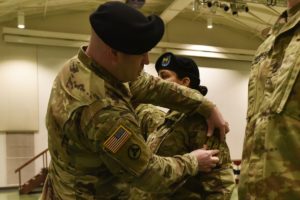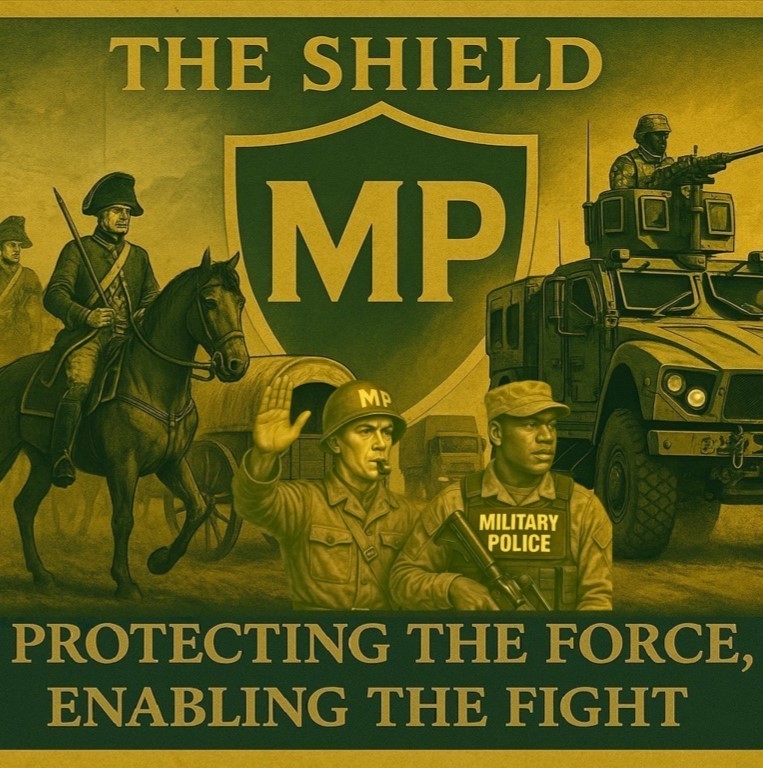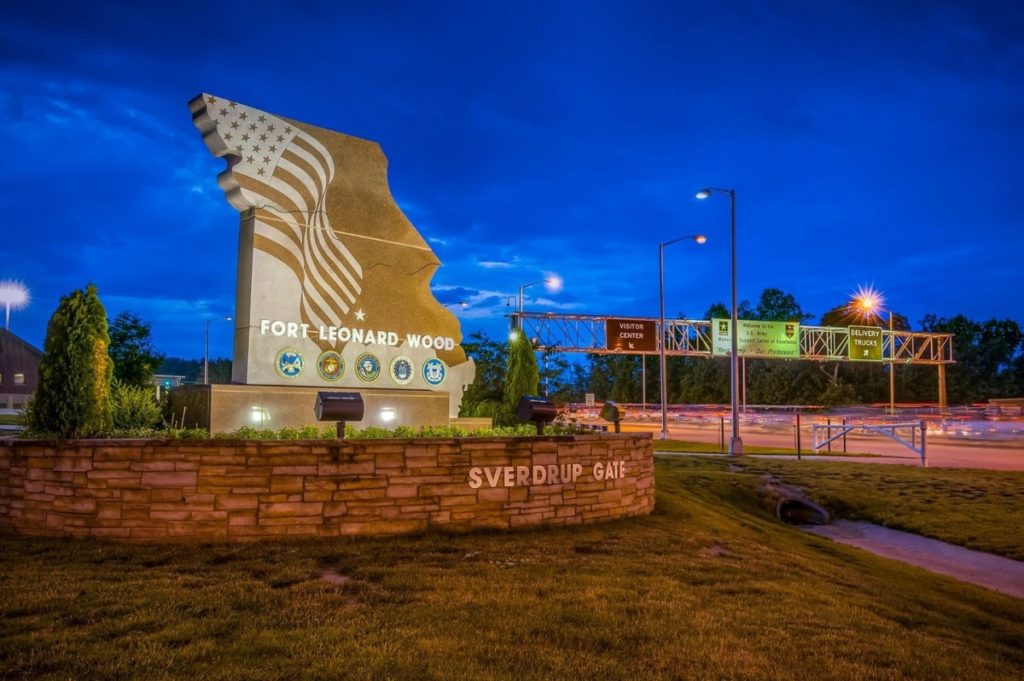Brian Hill
FORT LEONARD WOOD, Mo. (April 8, 2022) The 58th Transportation Battalion held a patching ceremony April 1 in Nutter Field House to signify their shift from the 2nd Transportation Brigade, 94th Training Division, to U.S. Army Combined Arms Support Command, or CASCOM.
The move puts the unit — responsible for providing Advanced Individual Training for the Army’s 88M Motor Vehicle Operator military occupational specialty — under their proponent, the U.S. Army Transportation School, which falls under CASCOM.
At the ceremony, Lt. Col. William Weaver, 58th Transportation Battalion commander, highlighted the support and “steady leadership” his unit received under the 94th Training Division, along with one of the major benefits to the reorganization — improved training effectiveness.
“It has been an honor to wear the patch of the 94th Training Division,” Weaver said. “2nd Brigade has provided support to our Soldiers and steady leadership. I cannot say enough about the focused care for Soldiers that I saw every day from the 2nd Brigade command team and staff. Task organizing the 58th directly under the U.S. Army Transportation School and CASCOM both improves our effectiveness in training 88-series Soldiers, and sets conditions for long-term organizational structure stability. Our Soldiers and the Army will benefit from this change.”
For nearly three years, the battalion was aligned under the 94th Training Division — a Reserve unit — as part of the Army’s Associated Units Program. First launched in 2016, the program was designed to test whether combining units across the components — active duty, Reserve and National Guard — would increase readiness and improve relationships and unit cohesion.
According to Sgt. 1st Class Matthew Henninger, the battalion’s S-3, or operations NCO, 71 percent of the Army’s Transportation Corps is made up of Reserve and National Guard Soldiers, and the program benefited each component.
“(The program) did a great job at giving us an understanding of the hurdles that both the active component side has, versus what the Guard and Reserve components have,” Henninger said.
This realignment brings all of the pieces of the transportation structure back together, Henninger added. In addition to the 88M Soldiers trained here, the Career Management Field 88 includes 88H Cargo Specialist, 88K Watercraft Operator, 88L Watercraft Engineer, 88N Transportation Management Coordinator, 88U Railway Operations Specialist and 88Z Transportation Senior Sergeant.
Henninger added that being under CASCOM and the Transportation School means a faster, more streamlined structure.
“We are able to rapidly flex change as the lesson plans are updated for students, based on what the force says the Transportation Corps needs to be teaching those students – we can rapidly change that now because we’re directly with our school house proponent,” Henninger said.
According to the Army’s Center for Military History, the 58th Transportation Battalion was originally activated as the Headquarters and Headquarters Detachment, 2nd Battalion, 27th Quartermaster Truck Regiment, in July 1942, at Camp Rucker, Alabama.
After being reorganized and redesignated as the Headquarters and Headquarters Detachment, 58th Quartermaster Battalion, the unit participated in three World War II campaigns. It was inactivated in October 1945.
It was later converted and redesignated as the Headquarters and Headquarters Detachment, 58th Transportation Battalion, in November 1965, and participated in campaigns during the Vietnam War until it was inactivated again in April 1972. It was reactivated in July 1986, under U.S. Army Training and Doctrine Command, to assume training missions at Fort Leonard Wood.

-30-
About Fort Leonard Wood
Fort Leonard Wood is a thriving and prosperous installation that has evolved from a small basic training post 80 years ago to a premier Army Center of Excellence that trains nearly 80,000 military and civilians each year.
Fort Leonard Wood is home to the U.S Army Maneuver Support Center of Excellence and three U.S. Army schools: the U.S. Army Engineer School; U.S. Army Chemical, Biological, Radiological and Nuclear School; and the U.S. Army Military Police School. In addition to training engineer, CBRN and military police specialties for the Army, Fort Leonard Wood also provides gender-integrated in-processing and Basic Combat Training for new Soldiers.
Fort Leonard Wood also hosts and trains with the largest Marine Corps Detachment and Air Force Squadron on any Army installation as well as a large Navy construction detachment.
More information about Fort Leonard Wood is at: https://home.army.mil/wood/index.php/about/mission


